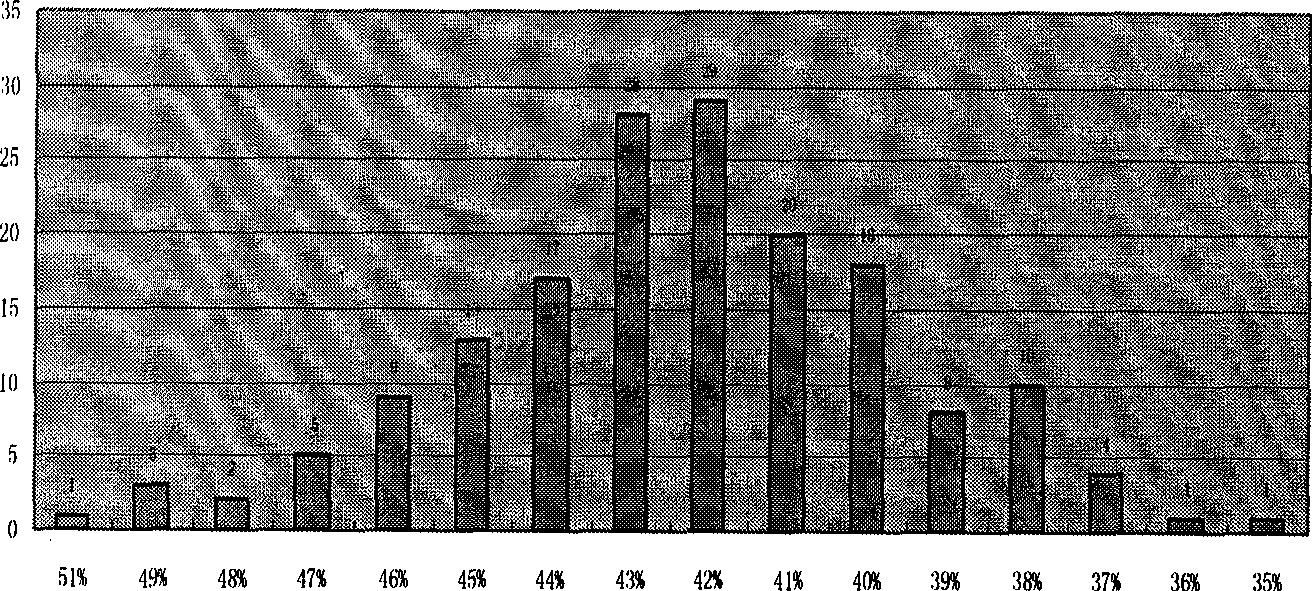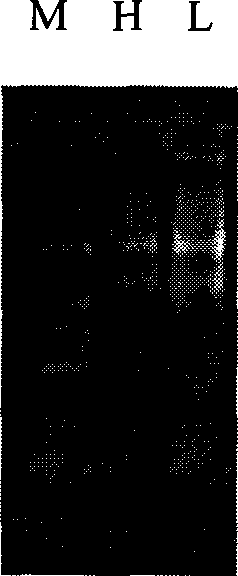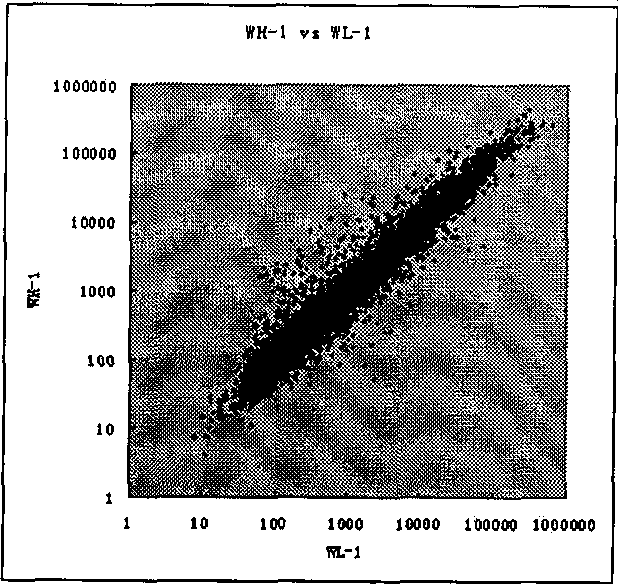High-throughput method for segregating quantitative character regulatory gene
A technology for regulating genes and quantitative traits, applied in biochemical equipment and methods, microbial determination/inspection, DNA preparation, etc. , accuracy guarantee, the effect of simplified operation
- Summary
- Abstract
- Description
- Claims
- Application Information
AI Technical Summary
Problems solved by technology
Method used
Image
Examples
Embodiment 1
[0037] A high-throughput method for isolating genes regulating oil content in rapeseed, the steps of which are as follows:
[0038] 1) Construction of rapeseed oil content segregation populations: rapeseed oil content traits are a typical quantitative trait, and the populations used in the examples are the hybrid offspring of high and low oil content parents (zy036 with oil content of 51% and Y817 with 35% respectively)- -F2 generation.
[0039] 2) Mixing of extreme samples in the population and isolation of total RNA: Divide the F2 offspring segregation population into three categories according to the phenotypes of high and low oil content: individuals with extremely high oil content, that is, individuals with oil content greater than 47% (47-51%), and individuals with oil content greater than 47%. Medium oily, ie individuals with an oil content between 39-47%, extremely low oily, ie individuals with less than 39% oil (35-39%). The individuals of the same type with extremel...
Embodiment 2
[0044] A high-throughput method for isolating oil content regulation genes of rapeseed, the steps are as follows: (construction of oil content traits segregation genetic population and composition of extreme material mixed samples)
[0045] 1) The high and low oil content lines zy036 and y817 (oil content 51% and 35% respectively) were crossed to construct F 2 A total of 169 offspring individual plants were obtained from the generation group;
[0046] 2) collect the siliques (siliques and ovules) of each F2 individual plant about 25 days after flowering;
[0047] 3) The oil content of each individual plant was detected, and the distribution diagram is shown in Example 1. The oil content of the F2 generation seeds varied by 35.1-51.5%, among which 11 plants had an oil content greater than 47%, and 11 plants had an oil content less than 38.5%;
[0048] 4) Take equal amounts of 200 mg of siliques from individual plants whose oil content is detected to be greater than 47% and le...
Embodiment 3
[0051] A high-throughput method for isolating genes regulating oil content in rapeseed, the steps are as follows: (Using Microarray technology to analyze the expression of H and L genes in mixed samples at both extremes)
PUM
 Login to View More
Login to View More Abstract
Description
Claims
Application Information
 Login to View More
Login to View More - R&D
- Intellectual Property
- Life Sciences
- Materials
- Tech Scout
- Unparalleled Data Quality
- Higher Quality Content
- 60% Fewer Hallucinations
Browse by: Latest US Patents, China's latest patents, Technical Efficacy Thesaurus, Application Domain, Technology Topic, Popular Technical Reports.
© 2025 PatSnap. All rights reserved.Legal|Privacy policy|Modern Slavery Act Transparency Statement|Sitemap|About US| Contact US: help@patsnap.com



